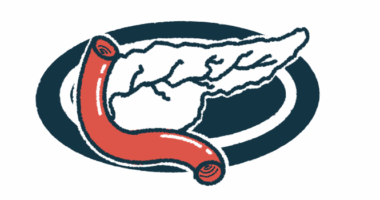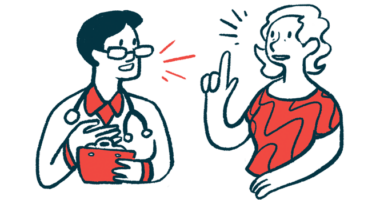How CAD affected my skin cancer surgery and healing
Traditional healing timetables might not apply to us with cold agglutinin disease

Standing at the bathroom mirror, I peer this way and that. Has that scab become smaller? Is there any redness or pain? Any swelling, especially around the edges of my skin graft? Everything seems to be going smoothly. I’m pleasantly surprised.
I had my Mohs surgery (for skin cancer on the nose) on Dec. 17. Everything went smoothly, side from being extremely painful. I left the doctor’s office with a pressure bandage on my nose and a purple, medical “superglue” line down the opposite side. The superglue line was from where the doctor took the skin for the graft.
Not only did I feel like Frankenstein’s monster, but I was also a bit apprehensive. It takes cold agglutinin disease (CAD) patients longer to recover from infections and injuries than people without CAD. CAD causes anemia, meaning there are fewer red blood cells to deliver nutrients and oxygen to healing tissues.
The anemia also means CAD patients are more susceptible to developing infections. Our white cells don’t work quite properly at recognizing threats. Having a wound means I don’t have a protective skin barrier from any stray bacteria I might encounter. I need to be extra careful.
Oh! The pain of it all
Mohs surgery is a simply understood procedure. The doctor or the staff numbs the area with lidocaine. A slice of cells is removed. The cells are examined under a microscope, and if no further basal cell carcinomas are detected, the doctor closes the area, and the patient proceeds out the door.
I discovered that my nose is a sensitive protrusion. The lidocaine injection hurt. It hurt to the point of bringing tears. I’ve had plenty of injuries needing stitches in my life. This pain was for the record books.
Once numbed, the removal was without drama. A bandage was placed on my nose, and I was escorted to a waiting room for other sufferers. I waited one hour while the lidocaine wore off. Fortunately, one layer removed all the cancer. Now all that was left was closing my wound.
The doctor felt that for best recovery, I needed a skin graft. Yikes! I’d heard about this, but now I learned a little more about it. Of course, I did receive more lidocaine in every necessary place so I wouldn’t feel the pain. Again, the lidocaine hurt. Again, I cried.
My return visit to get the 16 stitches removed was scheduled for 10 days later. I was told to leave the bandage alone. I had no idea what was happening on the end of my nose. I could see a bit of blood had seeped into the bandage, cementing it to my wound.
I held my breath as the nurse chiseled the bandage off my nose. I had a great fear that my predicted slow healing would result in the graft not sticking. Or did the dried blood on the bandage pull the graft off as it was being removed?
It took a while, but soon all was revealed. CAD had indeed affected my healing. The nurse was surprised, but the stitches weren’t ready to be removed. I was given a return date a week later.
The good news is that there was no infection developing. Despite CAD lowering my immune system, my careful avoidance of germs and bacteria paid off. All the swelling appeared gone. There was no oozing as infected wounds do. I was just healing slowly.
Moving forward
By now, Jan. 8, my nose is well on its way to normalcy. I’m also surprised to report that I’m well within the standard timetable for healing from this type of surgery. Because CAD sometimes complicates matters, I need to remain stateside near my doctors until the wound is completely healed over. The challenge now is to stay warm! My daughter is dealing with a blizzard in Kansas, and it may snow here in Alabama.
My friends in Papua, Indonesia, where my husband and I work, became concerned about an indolent carcinoma. Little did they know, the main challenge to me now is avoiding the acrocyanosis, or discoloration, and hemolysis, the breakdown of red blood cells, that come with CAD in this winter weather. I want to fly away back to my tropical haven.
Note: Cold Agglutinin Disease News is strictly a news and information website about the disease. It does not provide medical advice, diagnosis, or treatment. This content is not intended to be a substitute for professional medical advice, diagnosis, or treatment. Always seek the advice of your physician or other qualified health provider with any questions you may have regarding a medical condition. Never disregard professional medical advice or delay in seeking it because of something you have read on this website. The opinions expressed in this column are not those of Cold Agglutinin Disease News or its parent company, Bionews, and are intended to spark discussion about issues pertaining to cold agglutinin disease.







PATRICIA NEAL
hello..Mary Lott...have been trying to get in touch with you...I am from Alabama,, have cad.....had the same nose surgery,,
oh my,,, now..becasuse the skin on my nose is so thin... it now turns purple in the cold...thank you for all your shares...so appreciated...
I wonder if after surgery... it would help to get in an oxygen tank???
Mary Lott
Oh, Patricia. You, and I have been through a lot. I don't know if it would help. No oxygen tank was suggested and I didn't think to ask. I should have. As for being from Alabama together, "Audemus jura nostra defendere." I went with the motto because I wasn't sure if my other comment (you can imagine what it is) would bring us together or separate us as if we were on opposing sides of a gridiron!